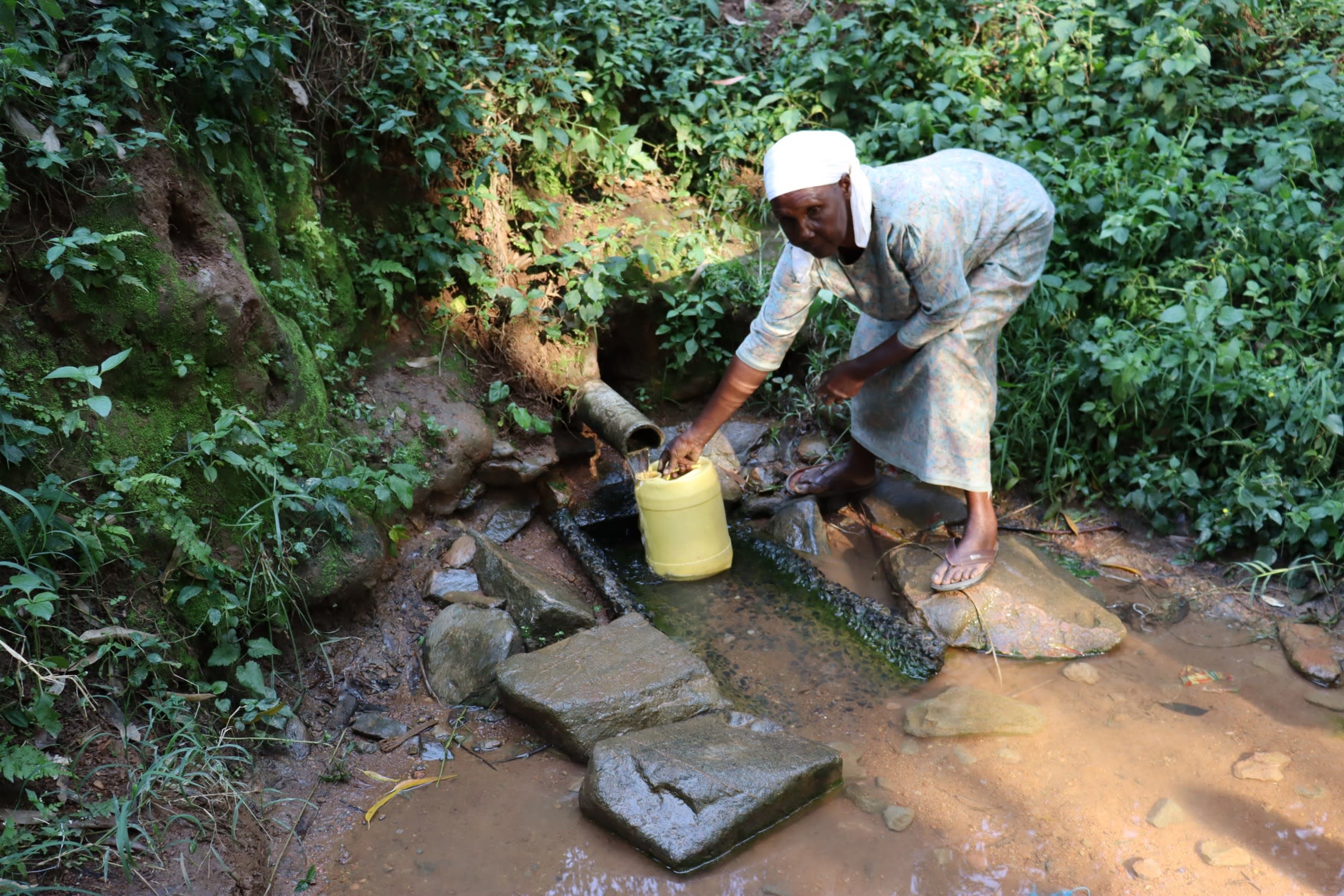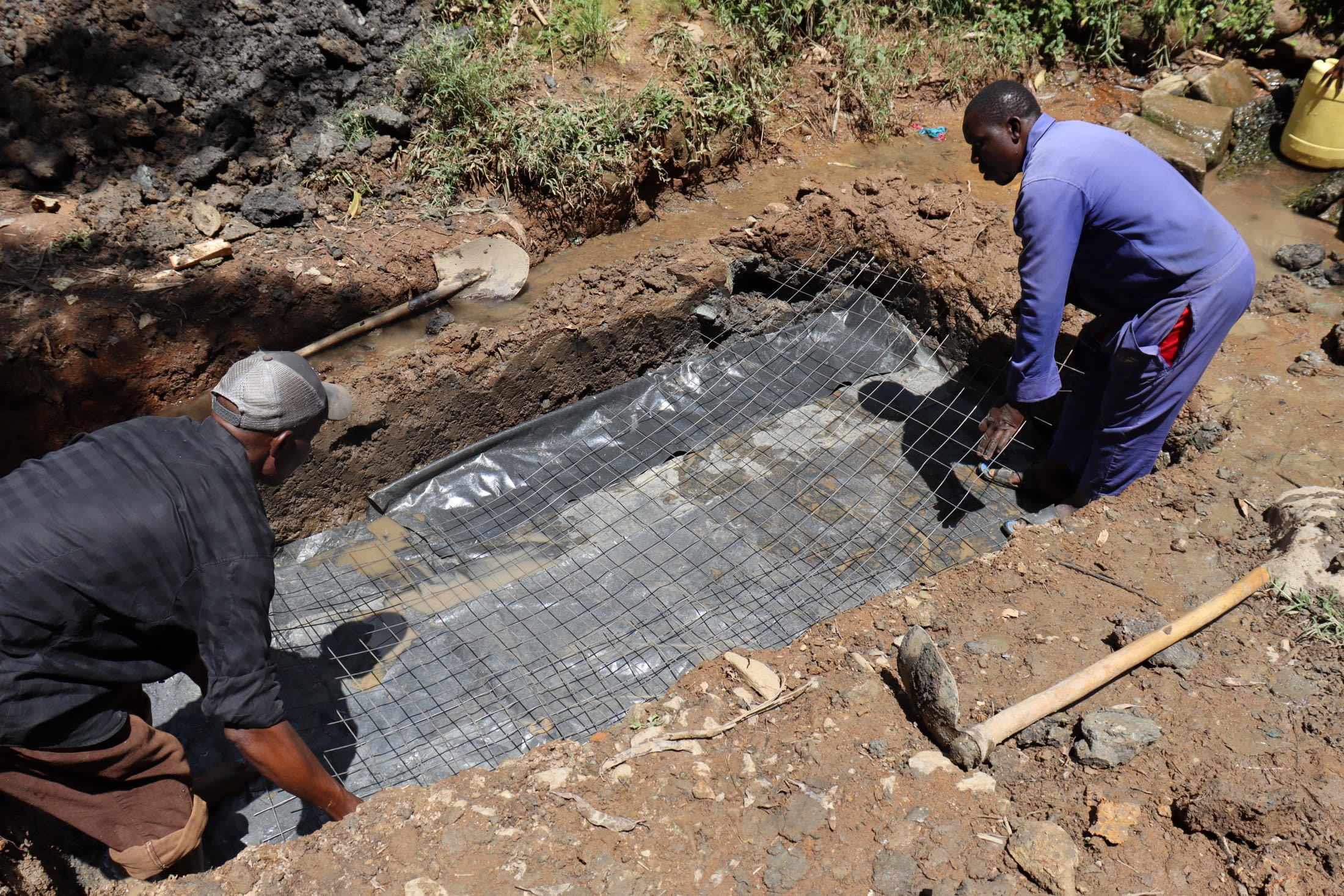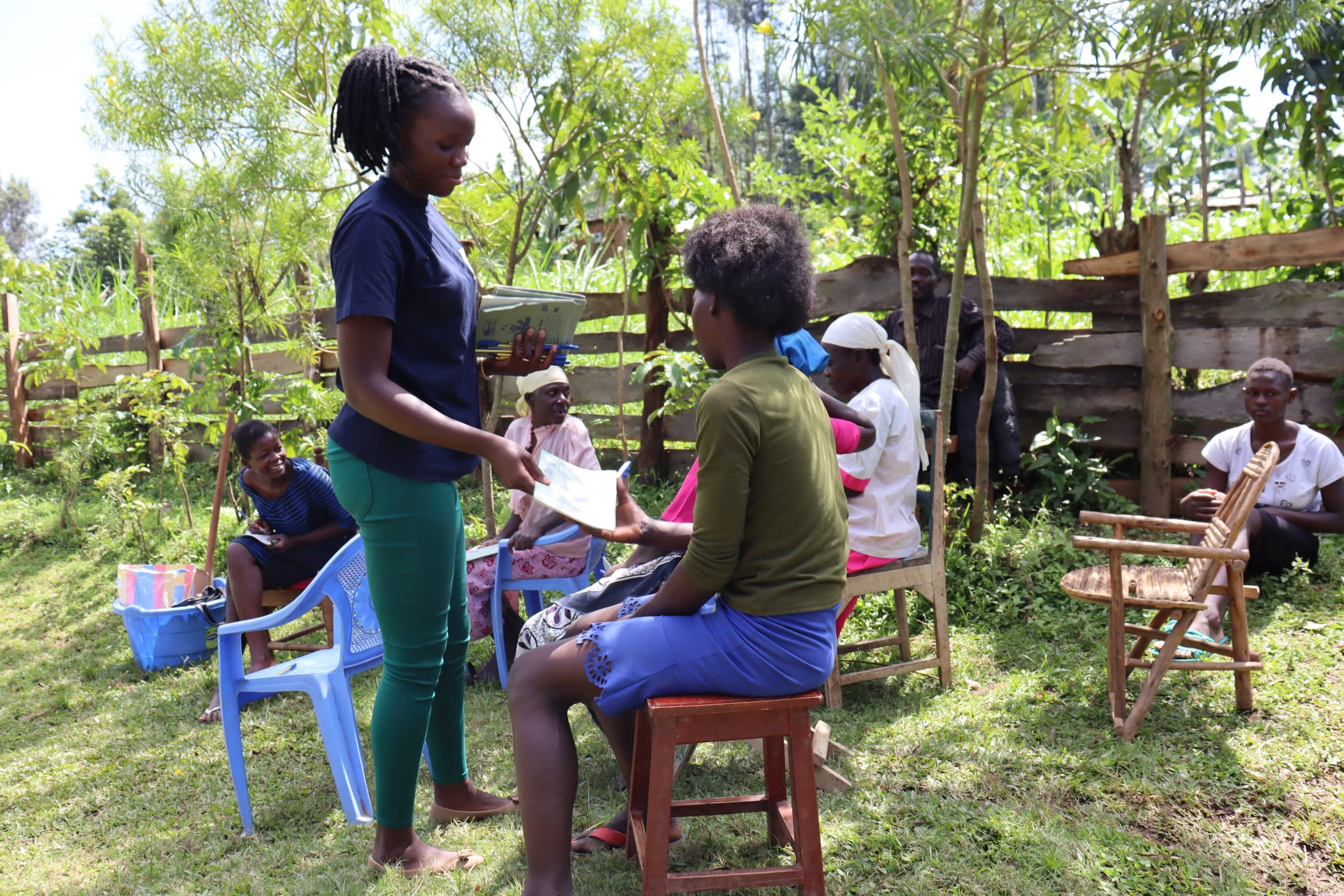The 180 community members who live in Ivugwi have done their best to improve Richard Mwoshi Spring, but its water is still contaminated and harmful to those who consume it.

They added a pipe to the discharge area, attempting to funnel the flow of water under the pipe area to ease collection, but these attempts have not solved the larger issues. People must still stand in the water or balance on a rock as they wait for their containers to fill with unsafe water. Without other water sources, they have no choice.
"The spring at times discharges colorful water that should not be used in drinking, cooking, and cleaning, but unfortunately, it is the only source that I am relying on with [my] family members, and it has caused me health problems," said Anna Mwoshi, a 68-year-old farmer (shown below collecting water).

Anna is not alone. Many community members have reported suffering from waterborne diseases such as typhoid, diarrhea, and related fevers. The persistent illnesses interfere with people's ability to work and provide income for their families. Often the money they manage to earn goes to pay for medical treatments for water-related ailments instead of other vital needs.
"The spring is found in a deep valley, making it difficult to carry water, especially during [the] rainy season. This has affected me personally because I once fell down, and my legs were injured, which made me miss school the whole term," said 14-year-old Jared I, shown below collecting water.

Although the terrain will still be challenging for community members, access to the water point should be safer once we build stairs. Hopefully, once we expertly protect the spring, community members will be able to gain back some of their time and energy, and their health will improve.
What We Can Do:
Spring Protection
Protecting the spring will help provide access to cleaner and safer water and reduce the time people have to spend to fetch it. Construction will keep surface runoff and other contaminants out of the water. With the community's high involvement in the process, there should be a good sense of responsibility and ownership for the new clean water source.
Fetching water is a task predominantly carried out by women and young girls. Protecting the spring and offering training and support will, therefore, help empower the female members of the community by freeing up more of their time and energy to engage and invest in income-generating activities and their education.
Training on Health, Hygiene and More
To hold trainings during the pandemic, we work closely with both community leaders and the local government to approve small groups to attend training. We ask community leaders to invite a select yet representative group of people to attend training who will then act as ambassadors to the rest of the community to share what they learn. We also communicate our expectations of physical distancing and wearing masks for all who choose to attend.
The training will focus on improved hygiene, health, and sanitation habits in this community. With the community's input, we will identify key leverage points where they can alter their practices at the personal, household, and community levels to affect change. This training will help to ensure participants have the knowledge they need about healthy practices and their importance to make the most of their water point as soon as water is flowing.
Our team of facilitators will use a variety of methods to train community members. Some of these methods include participatory hygiene and sanitation transformation, asset-based community development, group discussions, handouts, and demonstrations at the spring.
One of the most important issues we plan to cover is the handling, storage, and treatment of water. Having a clean water source will be extremely helpful, but it is useless if water gets contaminated by the time it is consumed. We and the community strongly believe that all of these components will work together to improve living standards here, which will help to unlock the potential for these community members to live better, healthier lives.
We will then conduct a small series of follow-up trainings before transitioning to our regularly scheduled support visits throughout the year.
Training will result in the formation of a water user committee, elected by their peers, that will oversee the operations and maintenance of the spring. The committee will enforce proper behavior around the spring and delegate tasks that will help preserve the site, such as building a fence and digging proper drainage channels. The fence will keep out destructive animals and unwanted waste, and the drainage will keep the area's mosquito population at a minimum.





 Protected Spring
Protected Spring
 Rehabilitation Project
Rehabilitation Project






























